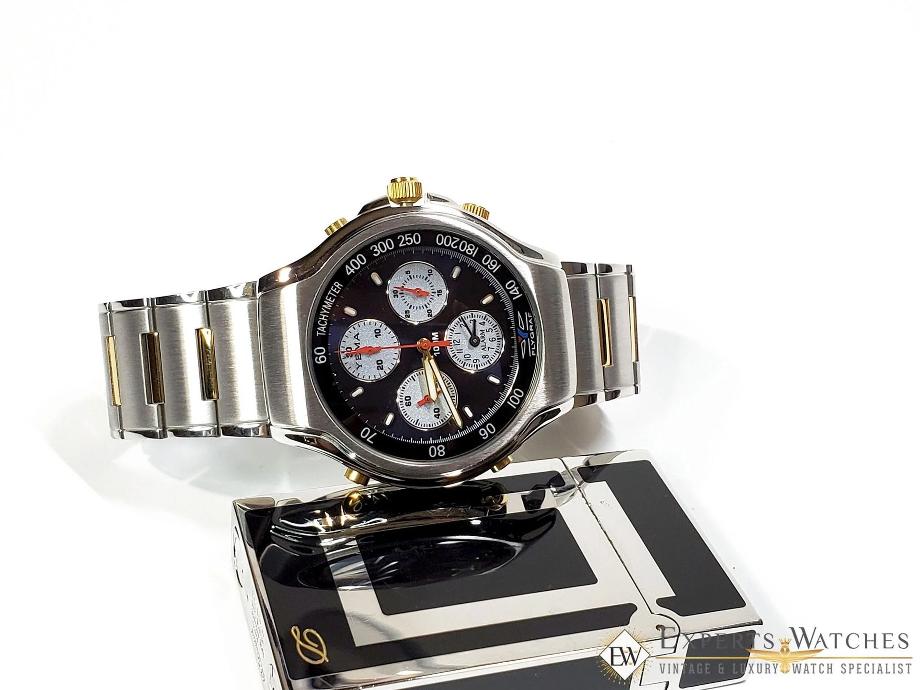Market Impact of Mechanical and Quartz Movements

The watch industry has been profoundly influenced by the development and proliferation of mechanical and quartz movements. These advancements have shaped consumer preferences, manufacturing practices, and market dynamics in significant ways. In this article, presented by ExpertsWatches, we explore how mechanical and quartz movements have impacted the market and continue to influence the industry today.
The Quartz Revolution: Market Disruption and Transformation
- Market Disruption:
- Quartz Crisis: The introduction of quartz technology in the late 1960s and early 1970s disrupted the traditional watch industry, particularly affecting Swiss watchmakers who had dominated the market with mechanical timepieces. The "Quartz Crisis" led to a significant shift in market dynamics as watch movements that changed the world offered superior accuracy and affordability.
- Decline of Traditional Watchmakers: Many Swiss brands faced financial difficulties as they struggled to compete with the lower costs and higher accuracy of quartz watches. This crisis led to mergers, acquisitions, and the eventual decline of several iconic brands.
- Mass Market Accessibility:
- Affordability: Quartz movements enabled the mass production of accurate and affordable watches. This democratization of timekeeping made watches accessible to a broader audience, significantly increasing market penetration.
- Global Reach: The lower price points of quartz watches allowed for their widespread adoption across various demographics and regions, expanding the global watch market and increasing competition among brands.
- Innovation and New Segments:
- Technological Advancements: Quartz technology facilitated the development of new watch features and functionalities, such as digital displays, chronographs, and alarms. This innovation spurred the creation of diverse market segments, including sports watches and digital timepieces.
- Smartwatches: The evolution of quartz technology paved the way for smartwatches, which integrate digital technology, connectivity, and advanced features. This new segment has transformed the concept of timekeeping and broadened the market.
- Impact on Luxury Segment:
- Resurgence of Mechanical Watches: In response to the quartz revolution, luxury brands began to emphasize the heritage, craftsmanship, and exclusivity of mechanical watches. This shift allowed mechanical timepieces to be positioned as luxury items and collectible artifacts.
- Brand Differentiation: High-end manufacturers leveraged their traditional watchmaking expertise and artistry to differentiate themselves from quartz competitors, catering to collectors and enthusiasts who value craftsmanship and history.
I Found my Favourite Watch Strap From One of the trusted Website : https://expertswatches.com
The Enduring Appeal of Mechanical Movements
- Craftsmanship and Heritage:
- Artistry and Engineering: Mechanical watches are celebrated for their intricate craftsmanship and engineering. The complexity of mechanical movements appeals to collectors and enthusiasts who appreciate traditional watchmaking techniques and the artistry involved.
- Heritage Value: Mechanical watches often carry historical significance and heritage, contributing to their status as luxury items and family heirlooms. This heritage value helps maintain a strong market for high-end mechanical timepieces.
- Niche Market and Collectability:
- Exclusivity: Mechanical watches cater to a niche market that values exclusivity and collectability. Limited editions, high-end complications, and bespoke timepieces attract affluent consumers and collectors seeking unique and rare timepieces.
- Secondary Market: The collectability of mechanical watches has led to a thriving secondary market where vintage and rare pieces can command premium prices. This market is driven by the appreciation of craftsmanship, rarity, and historical significance.
- Brand Loyalty and Identity:
- Luxury Branding: Many luxury watch brands have successfully built strong brand identities around their heritage, craftsmanship, and technical expertise. This brand loyalty helps maintain their prestige and market position.
- Customer Relationships: Brands that emphasize their traditional watchmaking expertise create a strong emotional connection with customers, fostering loyalty and repeat business.
Integration of Movements and Emerging Trends
- Hybrid Movements:
- Combining Technologies: The watch industry has seen the development of hybrid movements that combine the advantages of both mechanical and quartz technologies. Examples include watches with mechanical movements enhanced by quartz accuracy or quartz watches incorporating mechanical components.
- Consumer Preferences: These hybrids appeal to consumers who seek the best of both worlds, offering a blend of accuracy, durability, and craftsmanship.
- Smartwatches and Digital Integration:
- Technological Advancements: The rise of smartwatches represents a significant market impact, integrating digital technology, connectivity, and advanced features into timepieces. This segment has expanded the definition of what a watch can be, offering functionalities beyond traditional timekeeping.
- Market Growth: Smartwatches have become a major segment in the watch market, appealing to tech-savvy consumers and contributing to the growth of the industry.
Conclusion
The market impact of mechanical and quartz movements reflects a dynamic evolution in the watch industry. Quartz technology revolutionized the market with its accuracy, affordability, and mass production capabilities, leading to significant changes in market dynamics and consumer preferences. Meanwhile, mechanical watches have maintained their appeal through craftsmanship, heritage, and exclusivity, carving out a niche in the luxury segment. At ExpertsWatches, we recognize the diverse contributions of both mechanical and quartz movements to the rich tapestry of watchmaking history and continue to celebrate their unique impact on the industry.